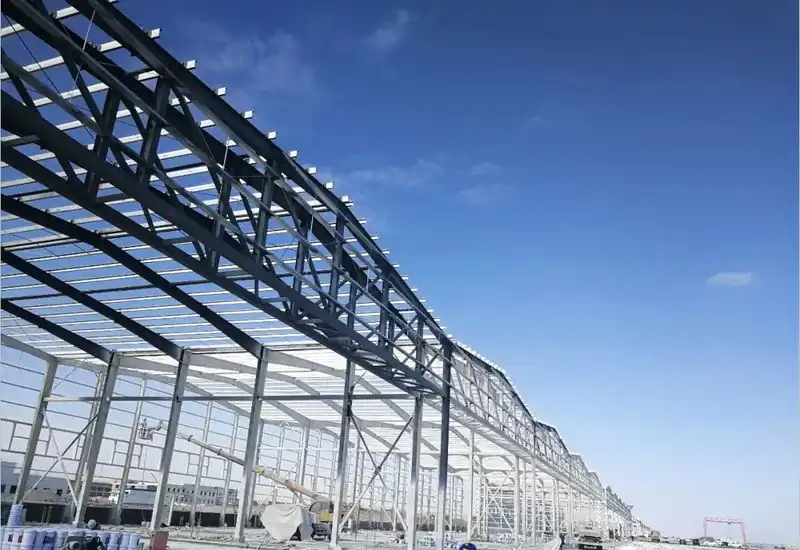Messi Biology explains that from the load-bearing steel columns of super-high-rise office buildings to the steel girders of cross-river bridges, steel structures have become the “skeleton” of modern infrastructure due to their high strength and lightweight characteristics. However, steel structures continuously exposed to the outdoors face two major threats: corrosion and fire. Rainwater and moisture cause the steel to rust gradually, while high temperatures from a fire can cause the steel to lose its load-bearing capacity above 600°C. Although traditional solvent-based coatings for steel structures can provide protection, they do not meet environmental requirements due to high VOC (Volatile Organic Compound) pollution. Today, water-based coatings have become the new choice for steel structure protection, and the “protective core” hidden within these coatings—magnesium hydroxide—is distinguishing itself with excellent performance. The magnesium hydroxide products from Hebei Messi Biology Co., Ltd. have elevated this protective capability to a new level.

In water-based coatings for steel structures, magnesium hydroxide is by no means an ordinary additive; it is a “multifunctional guardian” that integrates flame retardancy, smoke suppression, and anti-corrosion properties. In terms of its flame-retardant principle, when the fire temperature rises above 340°C, magnesium hydroxide gradually decomposes into magnesium oxide and water vapor. Each gram of decomposition absorbs 1.37 kJ of heat, acting like “cooling armor” for the steel structure. This rapidly controls the surface temperature of the steel within a safe range, delaying its softening and deformation. The released water vapor also dilutes the oxygen concentration in the combustion area, further inhibiting the spread of the fire. More critically, the resulting magnesium oxide forms a continuous and dense inorganic protective layer on the coating surface, like a “fire barrier,” isolating the flame from direct contact with the steel structure and buying precious time for personnel evacuation and firefighting rescue.
In addition to flame retardancy, magnesium hydroxide can also address the “invisible killer” in fires—toxic smoke. Data shows that 80% of casualties in fires are caused by smoke poisoning. Magnesium hydroxide can capture free radicals produced during combustion, reducing the release of toxic gases such as carbon monoxide and hydrogen chloride, thereby significantly improving safety at the fire scene. In the field of anti-corrosion, the advantages of high-purity magnesium hydroxide are equally apparent: it can prevent electrochemical corrosion caused by impurities (such as chloride and sulfate ions). Its unique lamellar crystal structure can also form a “labyrinth-like” barrier within the coating, slowing the penetration of rainwater and moisture to the steel surface and extending the anti-corrosion lifespan of the coating by more than 30%.
However, water-based coatings for steel structures have extremely strict requirements for magnesium hydroxide; indicators such as dispersibility, purity, and particle size distribution directly determine the coating’s performance. If magnesium hydroxide particles agglomerate, it can lead to coating delamination and pinholes in the applied coating. High impurity levels can destroy the stability of the coating. These have been long-standing pain points in the industry. The magnesium hydroxide products from Hebei Messi Biology Co., Ltd. have precisely solved these problems.
In terms of purity control, Messi Biology relies on its independently developed calcination and purification process to increase the purity of magnesium hydroxide to over 99.8%, with the content of harmful impurities (such as chloride and iron ions) below 0.01%, far superior to the industry average purity standard of 95%. This high purity not only prevents impurities from interfering with the stability of the water-based coating but also reduces the risk of electrochemical corrosion of the steel structure from the source, allowing the coating to maintain its protective effect for a long time even in harsh outdoor environments.
Regarding particle size and dispersibility, the company has broken through the limitations of traditional grinding processes. Through “directional crystallization + low-temperature air-flow pulverization” technology, it precisely controls the magnesium hydroxide particles at the nano-micrometer level (average particle size 1-5μm) and forms a unique hexagonal lamellar crystal structure. The specific surface area of this structure exceeds 40m²/g, enabling “molecular-level” compatibility with water-based resins, pigments, and fillers. Even with long-term storage, the coating does not experience delamination or sedimentation. After application, the coating’s flatness can reach a mirror-like level, effectively avoiding weak points in fire protection and anti-corrosion caused by uneven coating, thus making the protective effect more uniform and reliable.
In practical applications, water-based steel structure coatings containing Messi Biology’s magnesium hydroxide can not only easily pass the Class A fire protection standard of GB14907-2018 “Fire Retardant Coatings for Steel Structures” (with a fire resistance limit of over 2.5 hours), but their VOC content can also be controlled below 50g/L, which is far below the national VOC limit standard for water-based coatings. This makes them a perfect fit for high-end applications such as green buildings and ultra-low energy consumption factory buildings.
From the steel structures of industrial park workshops to the load-bearing steel girders of sea-crossing bridges, Hebei Messi Biology Co., Ltd.’s magnesium hydroxide is becoming the “core engine” for water-based coatings for steel structures. It not only addresses the shortcomings of water-based coatings in fire protection and anti-corrosion performance but also aligns with the development needs of modern infrastructure for “safety, environmental protection, and long-term effectiveness.” In an era of continuous upgrades in steel structure protection technology, such a material, possessing both high performance and green attributes, undoubtedly builds a stronger and more sustainable protective barrier for the “metal skeletons” of our cities and injects new momentum into the development of the environmentally friendly coatings industry.
